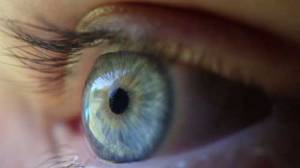Вход / Регистрация
22.12.2024, 23:50
Главная » 2015 Июнь 16 » The Human Eye Can See Individual Particles Of Light
08:51 The Human Eye Can See Individual Particles Of Light |
 As much as we may try, humans can’t see in complete darkness. But even in the presence of just a few light particles, special cells in our eyes activate. For decades researchers have been trying to find out the minimum number of photons our eyes can see. Now researchers from the University of Illinois have found out: three photons is the eye’s lower limit, according to a presentation yesterday at the American Physical Society conference in Columbus, Ohio, Nature News and Comment reports. Rods are the cells in our eyes that respond to shades of gray and are most sensitive to light (cones are the ones that see color but aren’t so good in the dark), so the researchers were looking to detect any activity in the rod cells to find the eye’s lower light limit. Experiments on individual rod cells in petri dishes showed a response to even just one photon, but it doesn’t work that way in the body; most of the light that reaches the eye doesn’t reach a rod because it’s reflected away, and if a cell responded to a single photon, the carefully calibrated nervous system would probably just interpret that as a cellular misfire. In past experiments, researchers determined that rods in the eye could pick up a minimum of two to seven photons, but they weren’t quite sure because they couldn’t control the exact number of photons in a flash of light. But now researchers have greater control. In this experiment, volunteers were put in a completely dark room. Researchers flashed exactly 30 photons at their eyes, assuming that only about ten percent of them would reach the rod cells. The volunteers had to guess whether the flash came from the right or the left, even if they didn’t think they could see the light. When flashed with only 30 photons, participants responded correctly more often than not, which led the researchers to conclude that the eye could see a minimum of three photons. In future tests the researchers want to test even fewer photons, monitoring brain waves to help them see if the eye can detect them. And they also hope to test light’s "quantum weirdness,” a photon’s ability to be two places at once, and see how the eye interprets it. |
| Категория: Science | Просмотров: 1104 | |
| Всего комментариев: 0 | |



